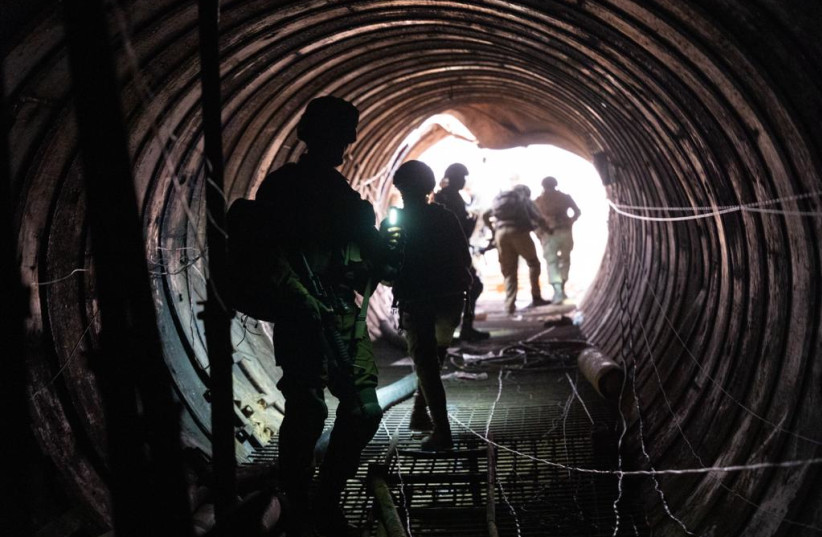Taking a look underground: West Point expert reframes Hamas tunnel issue
Chair of urban warfare studies at West Point, John Spencer, published an in-depth analysis of Hamas’s unprecedented sub-terranean tunnel network, and the measures taken by the IDF to effectively neutralize it, based on his two visits to Israel, which he shared on X on Friday.
Based on now two visits to Israel/Gaza since the war began, Israel and the IDF have destroyed Hamas’s strategy at every turn from tunnels to historic civilian harm mitigation steps while methodically and rapidly clearing every inch of Hamas territory. @GAvrilingi “Hamas’s…
— John Spencer (@SpencerGuard) March 1, 2024
He started his analysis by noting that the utilization of tunnels in warfare is not a novel concept, with historical examples dating back to biblical times and extending to modern conflicts such as the ongoing war in Ukraine.
However, he then highlighted the distinctive nature of the tunnels used by Hamas, saying its one of the two key pillars in Hamas’s strategy, along with time.
Before the outbreak of hostilities, the presence and extent of Hamas’s tunnel networks were believed to be well-documented, Spencer said.

Referred to as Gaza’s “Metro,” these networks were estimated to span hundreds of miles beneath the surface. Yet, as the conflict unfolded, the IDF unearthed an extensive labyrinth of tunnels, surpassing initial estimates. He then noted the immense investment Hamas has made in constructing these tunnels, which he believes may have cost the organization up to a billion dollars over fifteen years.
According to Spencer, Hamas’s strategy is not centered on territorial gains or defeating their enemy militarily, like most combatting forces, but on leveraging time (the second pillar of Hamas’s strategy) as a political tool. By prolonging the conflict and garnering international attention through the use of human shields and allegations of war crimes, he argues that Hamas seeks to exert pressure on Israel rather than gain the previously mentioned incentives.
This makes the case study of Hamas as the first one to use tunnels politically rather than just militarily, according to him.
Dismantling tunnels is an issue that modern armies still aren’t fully equipped to handle
While Israel boasts advanced capabilities for detecting and neutralizing tunnels at a tactical level, the strategic challenge posed by Hamas’s time-based strategy cannot be understated, he says. Destroying deep-buried tunnels requires significant time and resources, playing into Hamas’s objective of stalling Israeli military efforts.
Spencer also delved into the IDF’s response to the tunnel threat, highlighting the extensive measures taken to locate and destroy Hamas’s underground infrastructure. He mentioned specialized engineering capabilities and canine units, as well as the use of robots and aerial-delivered explosives.
Despite these efforts, Spencer noted that the effort to neutralize these tunnels is far from over, as it is a challenge that most well-equipped armies in the world simply aren’t prepared for.
Spencer previously published an analysis on X, describing how the IDF is taking unprecedented measures to reduce civilian casualties.
IMO Israel has implemented more measure to prevent civilian casualties in urban warfare than any other military in the history of war. This includes many measure the U.S. has (or has not) taken in wars & battles but also many measures no military in the world has ever taken.
— John Spencer (@SpencerGuard) January 30, 2024
Currently, the IDF continues to operate in the Gaza Strip, and provides updates of its activities, including the detection and destruction of tunnels, almost on a daily basis.





Comments are closed.